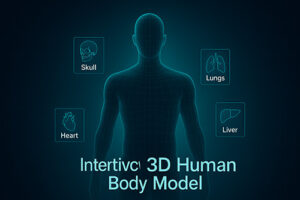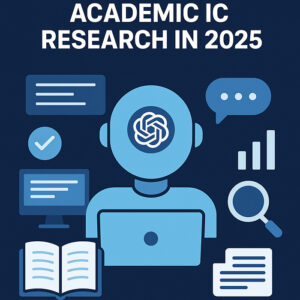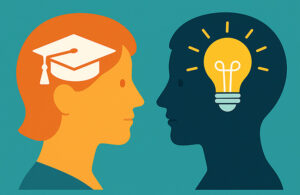Biotechnology and Genetic Engineering: Innovations and Future Prospects
Introduction: The Biological Revolution Reshaping Our World
Imagine a world where devastating genetic diseases are cured before symptoms appear, where crops can thrive in previously uninhabitable environments, and where microorganisms produce biodegradable plastics that eliminate pollution. This isn’t science fiction—it’s the emerging reality being shaped by biotechnology and genetic engineering.
In the last decade alone, breakthroughs like CRISPR-Cas9 gene editing have transformed what’s possible in the realm of biological manipulation, creating opportunities that were unimaginable even to scientists at the start of the 21st century. Today, we stand at the precipice of a biological revolution that promises to reshape medicine, agriculture, environmental conservation, and manufacturing in profound ways.
This article explores the cutting-edge innovations, practical applications, ethical considerations, and future prospects of biotechnology and genetic engineering—fields that are fundamentally altering our relationship with the natural world and our own biology.
What Are Biotechnology and Genetic Engineering?
Defining Biotechnology
Biotechnology refers to the use of biological systems, living organisms, or derivatives thereof to develop or create different products and processes for specific uses. This broad field encompasses any technological application that uses biological systems or living organisms to make or modify products and processes for specific purposes.
The scope of biotechnology extends across:
- Red biotechnology: Applications in medicine and healthcare
- Green biotechnology: Agricultural and environmental applications
- White biotechnology: Industrial applications and biomanufacturing
- Blue biotechnology: Applications involving marine and aquatic organisms
Understanding Genetic Engineering
Genetic engineering is a specialized subset of biotechnology that involves the direct manipulation of an organism’s genome using biotechnology tools. This process allows scientists to add new DNA, remove unwanted genes, or alter existing genes to change an organism’s traits.
The core principles of genetic engineering involve:
- Identifying a gene of interest
- Isolating that gene from the source organism
- Modifying or preparing the gene as needed
- Transferring the gene into the target organism
- Confirming successful integration and expression
Genetic engineering has evolved dramatically since its early days, with modern techniques allowing for increasingly precise genomic modifications that were previously impossible.
How Biotechnology is Revolutionizing Various Industries
Healthcare Transformation Through Biotechnology
The healthcare sector has perhaps benefited most visibly from advances in biotechnology. Here are some of the revolutionary applications:
Biopharmaceuticals and Personalized Medicine
Biotechnology has enabled the development of biopharmaceuticals—medications produced using living organisms rather than through chemical synthesis. These include:
- Recombinant proteins: Human insulin produced by genetically modified bacteria
- Monoclonal antibodies: Targeted therapies for cancer and autoimmune diseases
- Gene therapies: Treatments that modify genetic material to treat or prevent disease
- Cell therapies: Using living cells to treat diseases, including CAR-T cell therapy for cancer
The impact on patient care has been profound, with treatments becoming increasingly personalized based on individual genetic profiles and disease characteristics.
Diagnostic Innovations
Biotechnology has revolutionized disease diagnosis through:
- Molecular diagnostics: Detection of specific genetic sequences associated with diseases
- Point-of-care testing: Rapid, on-site diagnostic tools based on biological markers
- Liquid biopsies: Non-invasive cancer detection through blood tests
- Biomarker discovery: Identification of molecular indicators for early disease detection
These advances allow for earlier and more accurate diagnosis, significantly improving treatment outcomes and reducing healthcare costs.
Agricultural Revolution
Biotechnology applications in agriculture have addressed critical challenges in food security and sustainability:
Genetically Modified Organisms (GMOs)
GMO crops with engineered traits have resulted in:
- 22% increase in crop yields globally
- 37% reduction in pesticide use
- $167.8 billion in economic gains for farmers between 1996-2018
Notable examples include:
- Bt crops: Plants engineered to produce proteins toxic to specific insect pests
- Herbicide-resistant crops: Plants that can withstand herbicides that kill weeds
- Nutritionally enhanced crops: Golden Rice, engineered with beta-carotene to address vitamin A deficiency
Sustainable Farming Solutions
Beyond GMOs, biotechnology offers sustainable agriculture solutions through:
- Biological pest control: Development of natural predators or parasites to control pests
- Biofertilizers: Microorganisms that enhance plant nutrient uptake
- Soil health diagnostics: Tools to assess and improve soil microbial communities
- Precision agriculture: Integration of biotechnology with data science for optimized farming
Environmental Applications
Biotechnology provides powerful tools for environmental protection and remediation:
Bioremediation
Microorganisms and plants can be enhanced or selected to:
- Break down pollutants in soil and water
- Concentrate and extract heavy metals from contaminated sites
- Filter and purify wastewater
- Degrade plastic waste
Renewable Biofuels
Biotech advances have improved biofuel production through:
- Engineered microorganisms that convert cellulosic biomass to ethanol
- Algae strains optimized for biodiesel production
- Novel enzymatic processes for efficient biomass conversion
Industrial Manufacturing
Biotech is transforming manufacturing processes across industries:
Biomanufacturing
The use of biological systems rather than traditional chemical processes offers:
- Lower energy requirements (typically 30-50% reduction)
- Reduction in toxic waste products
- Renewable feedstocks instead of petroleum-based inputs
- More specific and efficient reactions
Examples include:
- Enzymes for detergents: Biological catalysts that enable low-temperature washing
- Bioplastics: Biodegradable polymers produced by microorganisms
- Biosynthetic materials: Spider silk proteins produced by engineered bacteria for high-performance materials
| Industry | Key Biotechnology Applications | Major Benefits |
|---|---|---|
| Healthcare | Biopharmaceuticals, Gene therapy, Diagnostics | Personalized treatments, Improved disease detection, Novel therapeutic approaches |
| Agriculture | GMOs, Biofertilizers, Molecular breeding | Increased crop yields, Reduced chemical inputs, Nutritional enhancement |
| Environment | Bioremediation, Biofuels, Biosensors | Pollution cleanup, Alternative energy, Environmental monitoring |
| Manufacturing | Biomanufacturing, Enzyme technology, Biomaterials | Sustainable production, Reduced energy use, Novel materials |
Recent Breakthroughs in Genetic Engineering
The pace of innovation in genetic engineering has accelerated dramatically in the past decade, with several transformative technologies moving from laboratory concepts to practical applications.
CRISPR-Cas9: The Gene Editing Revolution
CRISPR-Cas9 technology represents perhaps the most significant breakthrough in genetic engineering history. This precise “genetic scissors” system has transformed the field by making gene editing more:
- Accurate: Targeting specific DNA sequences with minimal off-target effects
- Efficient: Achieving modification rates far higher than previous techniques
- Accessible: Reducing the technical complexity and cost of gene editing
- Versatile: Applicable across virtually all species and cell types
Recent applications include:
- Treatment of genetic diseases: Clinical trials for sickle cell anemia, beta-thalassemia, and hereditary blindness
- Agricultural improvements: Development of disease-resistant crops and livestock
- Infectious disease control: Gene drive systems for controlling disease vectors
- Basic research: Functional genomics studies to understand gene function
The 2020 Nobel Prize in Chemistry awarded to Jennifer Doudna and Emmanuelle Charpentier for developing CRISPR underscores its revolutionary impact.
Advances in Gene Therapy
Gene therapy has progressed from experimental concept to approved clinical treatments, with several milestones:
- FDA approval of Luxturna (2017): First gene therapy for a genetic disease (inherited retinal dystrophy)
- FDA approval of Zolgensma (2019): Treatment for spinal muscular atrophy, once a fatal childhood disease
- CAR-T cell therapies: Genetically modified immune cells to target cancer
Delivery methods have also advanced significantly:
- Improved viral vectors: Safer and more efficient delivery systems
- Non-viral delivery: Lipid nanoparticles and other innovative carrier systems
- In vivo editing: Direct editing of genes within the body
Synthetic Biology: Engineering Life From the Ground Up
Synthetic biology combines genetic engineering with principles from engineering, design, and computer science to:
- Create biological systems with novel functions
- Standardize biological parts for easier assembly
- Design artificial biological circuits and pathways
Major developments include:
Minimal Genomes and Artificial Cells
In 2016, researchers at the J. Craig Venter Institute created the first bacterial cell with a fully synthetic minimal genome, containing only the genes necessary for life. This achievement:
- Advances our understanding of the basic requirements for life
- Provides a platform for building synthetic organisms with specific functions
- Opens possibilities for designing organisms with novel properties
Engineered Metabolic Pathways
Scientists can now reprogram cells’ metabolic machinery to produce:
- Pharmaceuticals: Artemisinin (antimalarial drug) produced in yeast
- Specialty chemicals: Fragrances, flavors, and industrial compounds
- Novel biomaterials: Spider silk proteins, biodegradable plastics
Biocomputing
Researchers have developed biological systems capable of:
- Storing digital information in DNA (potentially 455 exabytes per gram)
- Performing logical operations using genetic circuits
- Processing environmental inputs through engineered cell signaling pathways
Genomic Medicine and Whole Genome Sequencing
The cost of sequencing a human genome has fallen from $2.7 billion (Human Genome Project, 2003) to under $1,000 today, enabling:
- Population-scale genomics: Projects analyzing hundreds of thousands of genomes
- Precision medicine: Tailoring treatments based on individual genetic profiles
- Pharmacogenomics: Predicting drug responses based on genetic variations
- Predictive medicine: Identifying disease risks before symptoms develop
Ethical Concerns and Controversies
The rapid advancement of biotechnology and genetic engineering capabilities has raised significant ethical questions that society is still grappling with.
Bioethical Considerations in Human Genetic Modification
The ability to modify human genetics raises profound questions about:
Germline Editing vs. Somatic Cell Editing
- Somatic cell editing: Changes that affect only the individual being treated
- Germline editing: Changes that can be inherited by future generations
The 2018 announcement of the first CRISPR-edited babies in China sparked international outcry and highlighted the need for strict regulations on human germline editing.
Equity and Access
As genetic therapies advance, critical questions emerge about:
- Who will have access to potentially life-saving genetic treatments?
- How can we prevent these technologies from exacerbating healthcare disparities?
- What responsibility do developers have to ensure global accessibility?
GMO Safety and Environmental Concerns
Despite scientific consensus on GMO safety, concerns persist about:
- Long-term ecological impacts: Potential effects on biodiversity and ecosystems
- Gene flow: Transfer of engineered genes to wild relatives
- Resistance development: Evolution of resistant pests or weeds
- Monopolization: Corporate control of seed supplies and agricultural practices
Privacy and Genetic Information
As genetic testing becomes commonplace, questions arise regarding:
- Data ownership: Who owns and controls genetic information?
- Discrimination risks: Potential for discrimination based on genetic predispositions
- Consent issues: How to ensure informed consent for genetic data use
- Security concerns: Protecting highly personal genetic information
Balancing Innovation with Precaution
A key challenge is finding the appropriate balance between:
- Enabling beneficial innovation that addresses pressing human needs
- Applying sufficient precaution to prevent unintended consequences
- Respecting diverse perspectives on human-nature relationships
- Ensuring oversight without unnecessarily impeding progress
The Future of Biotechnology: Trends and Innovations
The biotechnology sector continues to evolve rapidly, with several emerging trends likely to shape the field in coming years.
Convergence with Other Technologies
Biotechnology is increasingly merging with other advanced technologies:
Artificial Intelligence and Machine Learning
AI applications in biotechnology include:
- Protein structure prediction: DeepMind’s AlphaFold 2 has revolutionized understanding of protein folding
- Drug discovery: AI algorithms identifying novel therapeutic candidates
- Biological design: Computational tools for designing genetic circuits and pathways
- Data integration: Making sense of complex biological datasets
Nanotechnology Integration
The interface between biotechnology and nanotechnology enables:
- Targeted drug delivery: Nanoscale carriers for precise therapeutic delivery
- Diagnostics: Ultrasensitive detection of biological markers
- Biomolecular engineering: Design of molecular machines and structures
- Neural interfaces: Direct connections between electronic systems and neural tissue
Emerging Fields in Biotechnology
Microbiome Engineering
The ability to manipulate the human microbiome—the trillions of microorganisms living in and on our bodies—promises:
- New approaches to treating inflammatory and metabolic diseases
- Personalized dietary interventions based on individual microbiome profiles
- Novel probiotics with enhanced therapeutic properties
- Microbial communities engineered for specific health benefits
Regenerative Medicine
Advances in stem cell technology, tissue engineering, and bioprinting are enabling:
- Organoids: Lab-grown miniature organs for research and testing
- Bioartificial organs: Engineered tissues for transplantation
- In situ regeneration: Stimulating the body’s own repair mechanisms
- 3D bioprinting: Creating complex tissue structures layer by layer
Xenotransplantation and Engineered Organs
Recent breakthroughs include:
- First successful transplant of a genetically modified pig heart into a human patient (2022)
- Development of chimeric organs combining human and animal cells
- Engineering of decellularized organ scaffolds repopulated with patient cells
Long-term Biotechnology Horizons
Looking further ahead, several ambitious areas of research could fundamentally transform biotechnology:
- De-extinction: Reviving extinct species through genetic engineering
- Biological computing: Using living cells as computational elements
- Terraforming: Engineering organisms to make hostile environments habitable
- Radical life extension: Interventions targeting the biological mechanisms of aging
Practical Applications and Case Studies
The theoretical promise of biotechnology is already being realized through numerous real-world applications across sectors.
Healthcare Success Stories
CAR-T Cell Therapy Revolution
Chimeric Antigen Receptor T-cell (CAR-T) therapy represents one of the most significant breakthroughs in cancer treatment. This approach:
- Collects a patient’s own T cells
- Genetically engineers them to target specific cancer markers
- Reinfuses them to attack cancer cells
Results: Complete remission rates of 60-90% for certain leukemias that were previously untreatable. FDA-approved treatments now include Kymriah, Yescarta, and several others.
Gene Therapy for Inherited Blindness
Luxturna, approved in 2017, treats inherited retinal dystrophy by:
- Delivering a functional copy of the RPE65 gene via viral vector
- Restoring the production of a critical protein in the retina
- Preventing progression of vision loss and restoring some vision
Impact: Children who were going blind have had vision restored, representing the first effective treatment for this previously untreatable condition.
Agricultural Innovations
Drought-Resistant Crops
Genetic engineering has developed crops that can thrive with significantly less water:
- DroughtGard corn: Contains a bacterial gene that helps maintain yield during drought
- Water-efficient maize: Developed through the Water Efficient Maize for Africa (WEMA) project
Results: Field trials show yield advantages of 15-30% under drought conditions, potentially benefiting millions of farmers in water-stressed regions.
Biofortified Crops Addressing Malnutrition
Golden Rice and other biofortified crops address micronutrient deficiencies:
- Golden Rice: Enhanced with beta-carotene to address vitamin A deficiency
- Iron-rich beans: Developed to combat iron deficiency anemia
- Zinc-biofortified wheat: Addressing zinc deficiency in vulnerable populations
Impact: Potential to improve nutrition for millions in developing countries where micronutrient deficiencies are common health challenges.
Environmental Applications
Plastic-Eating Enzymes
Researchers have engineered enzymes capable of breaking down polyethylene terephthalate (PET) plastic:
- The enzyme PETase can break plastic down into its building blocks
- These components can then be reused to make new plastic products
- The process potentially enables true plastic recycling rather than downcycling
Potential impact: A solution to the global plastic pollution crisis affecting our oceans and ecosystems.
Bioremediation of Oil Spills
After the Deepwater Horizon oil spill, naturally occurring oil-degrading microbes were supplemented with:
- Engineered bacterial consortia specialized for hydrocarbon degradation
- Nutrient additions to stimulate microbial growth
- Biosurfactants to increase oil bioavailability
Results: Enhanced biodegradation rates and reduced environmental impact compared to physical cleanup methods alone.
Industrial Case Studies
Biomanufacturing of Materials
Spider Silk Production
Companies like Bolt Threads have:
- Identified spider silk protein genes
- Transferred them to yeast cells
- Fermented these yeast to produce silk proteins
- Processed these proteins into fibers with remarkable properties
Applications: High-performance textiles with strength exceeding steel while maintaining flexibility and biodegradability.
Biologics Manufacturing Revolution
Production of monoclonal antibody therapies has been transformed through:
- Development of high-yielding cell lines
- Optimization of bioreactor conditions
- Continuous manufacturing processes
Impact: Reduction in production costs by over 80% in the past two decades, making biologic drugs more accessible to patients.
Modern biomanufacturing facility using cell cultures to produce therapeutic proteins at industrial scale
Frequently Asked Questions About Biotechnology and Genetic Engineering
How does genetic engineering work?
Genetic engineering works by directly manipulating an organism’s DNA. The basic process involves:
- Identifying a gene of interest with the desired trait
- Isolating this gene from the source organism’s genome
- Inserting this gene into a vector (such as a plasmid or virus)
- Transferring the vector containing the gene into the target organism
- Selecting successfully modified organisms that express the new gene
Modern techniques like CRISPR-Cas9 have made this process more precise by allowing scientists to edit specific locations in the genome directly, adding, removing, or changing DNA sequences with unprecedented accuracy.
Is genetic engineering safe?
The safety of genetic engineering depends largely on its application:
For medical treatments: Each therapy undergoes rigorous clinical trials to assess safety and efficacy before approval. Like all medical interventions, risks exist but are carefully evaluated against potential benefits.
For agricultural applications: Major scientific organizations including the WHO, National Academy of Sciences, and American Medical Association have concluded that GMO foods currently on the market present no greater health risks than conventional foods. Environmental safety is assessed through regulatory approval processes.
For research applications: Laboratory work follows strict biosafety protocols and ethical guidelines to prevent accidental release or misuse.
As with any powerful technology, proper regulation, oversight, and responsible use are essential to maintaining safety.
What’s the difference between GMO and gene editing?
GMO (Genetically Modified Organism) typically refers to organisms where:
- Foreign DNA from another species has been inserted
- The location of insertion may be somewhat random
- Traditional techniques often involve transferring entire genes
Gene editing (particularly CRISPR-based methods):
- Makes precise changes at specific locations in the genome
- Can involve small changes to existing genes rather than adding foreign DNA
- Allows for more targeted modifications with fewer off-target effects
- Can be indistinguishable from naturally occurring mutations
Some countries regulate these technologies differently based on these distinctions.
How is biotechnology addressing climate change?
Biotechnology offers multiple approaches to climate change mitigation:
- Biofuels and renewable energy: Engineered microorganisms producing advanced biofuels, reducing fossil fuel dependence
- Carbon capture: Enhanced photosynthetic efficiency in plants and algae to absorb more CO2
- Climate-resilient agriculture: Crops engineered to withstand extreme weather while maintaining yields
- Reduced emissions: Biological alternatives to energy-intensive industrial processes
- Alternative proteins: Lab-grown meat and plant-based proteins with smaller carbon footprints
What education do you need to work in biotechnology?
Career paths in biotechnology span various education levels:
- Laboratory technicians: Associate’s or Bachelor’s degree in biology, biotechnology, or related field
- Research scientists: Typically Ph.D. in molecular biology, genetics, biochemistry, or related disciplines
- Bioprocess engineers: Bachelor’s or Master’s in bioengineering, chemical engineering, or related field
- Computational biologists: Background combining biology with computer science, statistics, or data science
- Regulatory affairs specialists: Science background plus knowledge of regulatory frameworks
- Business roles: Various backgrounds often supplemented with industry knowledge
Interdisciplinary training is increasingly valuable as biotechnology merges with data science, engineering, and other fields.
Conclusion: Navigating the Biotechnology Future
The biotechnology revolution is well underway, transforming healthcare, agriculture, manufacturing, and environmental protection in profound ways. From gene-edited crops that address global food security to personalized medical treatments tailored to individual genetic profiles, the impacts are already being felt globally.
As we look ahead, several themes emerge:
Acceleration of innovation: The pace of discovery continues to increase, with technologies building upon one another in synergistic ways.
Democratization of tools: What once required massive infrastructure is becoming accessible to smaller labs, startups, and even citizen scientists.
Convergence of disciplines: Biotechnology increasingly merges with information technology, materials science, engineering, and other fields.
Ethical navigation: The need for thoughtful governance frameworks that enable innovation while preventing misuse becomes ever more important.
The coming decades will likely see biotechnology become increasingly integrated into everyday life, much as digital technology has over the past generation. Navigating this future requires not just scientific expertise but also informed public engagement with the profound questions these technologies raise.
Call to Action
As biotechnology continues to evolve at breathtaking speed, staying informed becomes increasingly important for everyone—not just scientists and policymakers. Here’s how you can engage:
- Explore further resources on biotechnology applications in areas that interest you most
- Follow reputable sources for updates on breakthrough research and policy developments
- Participate in public discussions about appropriate uses and limitations of these powerful technologies
- Consider careers in this rapidly expanding field that spans science, engineering, ethics, policy, and business
By understanding both the promise and challenges of biotechnology, we can collectively guide these powerful tools toward addressing humanity’s most pressing problems while minimizing potential risks.
<!– Schema Markup for SEO –> <script type=”application/ld+json”> { “@context”: “https://schema.org”, “@type”: “Article”, “headline”: “Biotechnology and Genetic Engineering: Innovations and Future Prospects”, “description”: “Comprehensive overview of biotechnology and genetic engineering advances, including CRISPR, gene therapy, agricultural applications, and ethical considerations.”, “image”: “https://via.placeholder.com/800×400?text=Biotechnology+Research+Laboratory”, “author”: { “@type”: “Organization”, “name”: “Research.Help” }, “publisher”: { “@type”: “Organization”, “name”: “Research.Help”, “logo”: { “@type”: “ImageObject”, “url”: “https://research.help/logo.png” } }, “datePublished”: “2025-03-12”, “dateModified”: “2025-03-12” } </script> <!– Meta Description For WordPress –> <!– Meta Description: Explore the revolutionary world of biotechnology and genetic engineering, from CRISPR and gene therapy breakthroughs to agricultural innovations and ethical considerations shaping our future. –> <!– Image Optimization Notes –> <!– Image Optimization Tips: 1. Compress all images using tools like TinyPNG before uploading 2. Use WebP format where browser support allows 3. Implement lazy loading for images below the fold 4. Ensure responsive image sizing with srcset attribute 5. Keep image file names descriptive with keywords separated by hyphens –>









